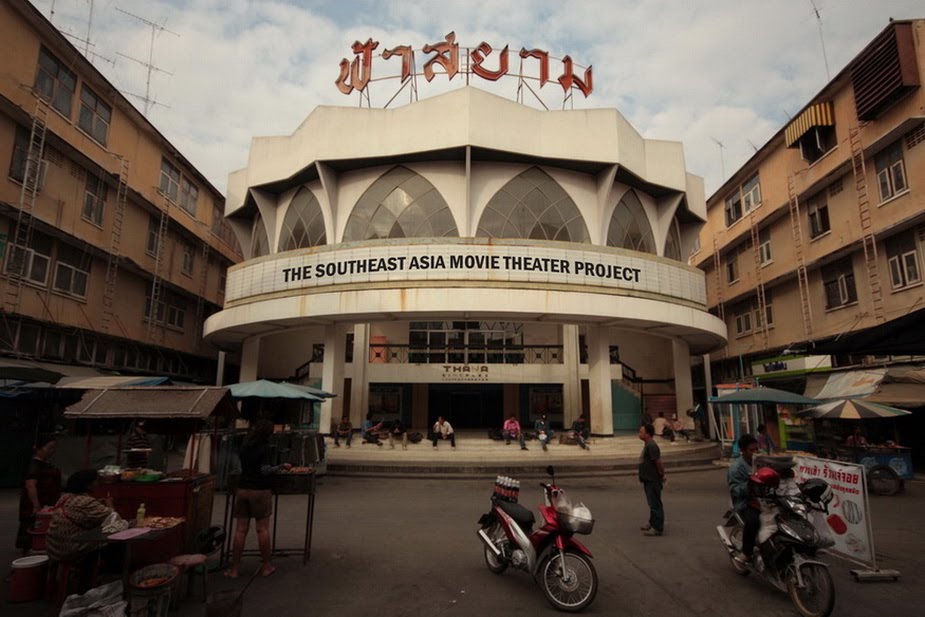
 The marquee for the Thai Rama Theater stands jumbled among the mayhem of Somdet Prajao Thaksin Road in the Wong Wian Yai neighborhood of Bangkok.
The marquee for the Thai Rama Theater stands jumbled among the mayhem of Somdet Prajao Thaksin Road in the Wong Wian Yai neighborhood of Bangkok. The day that I found the Thai Rama Theater was a productive day in the life of this movie theater geek. Just off the Wong Wian Yai traffic circle there are four old movie theaters, the Thai Rama among them. Within an hour or so I'd had the distinguished honor of seeing these four theaters in person with my own two eyes - an intoxicating experience which I'll never forget.
The day that I found the Thai Rama Theater was a productive day in the life of this movie theater geek. Just off the Wong Wian Yai traffic circle there are four old movie theaters, the Thai Rama among them. Within an hour or so I'd had the distinguished honor of seeing these four theaters in person with my own two eyes - an intoxicating experience which I'll never forget. There's a soi named after the Thai Rama Theater, as testified to on this street sign.
There's a soi named after the Thai Rama Theater, as testified to on this street sign. Severe narrowness: entrance to the Thai Rama on the right, the Sesawetch Market on the left.
Severe narrowness: entrance to the Thai Rama on the right, the Sesawetch Market on the left.  What I really want to point out about this theater is that it's right next to an open-air fresh market. This was a common trait among the Thai stand-alone theaters of the past. They were genuinely intertwined with the fabric of the neighborhoods they were in. Unlike the shopping mall multiplexes, these neighborhood theaters were easily accessible to everybody in the immediate vicinity. In many ways, the old neighborhood stand-alones were an extension of public space, even if it did cost money to get in. They were part and parcel of a public culture that the multiplexes can never replicate and which are quickly disappearing in many of the world's cities.
What I really want to point out about this theater is that it's right next to an open-air fresh market. This was a common trait among the Thai stand-alone theaters of the past. They were genuinely intertwined with the fabric of the neighborhoods they were in. Unlike the shopping mall multiplexes, these neighborhood theaters were easily accessible to everybody in the immediate vicinity. In many ways, the old neighborhood stand-alones were an extension of public space, even if it did cost money to get in. They were part and parcel of a public culture that the multiplexes can never replicate and which are quickly disappearing in many of the world's cities. Two desolate poster cases adorn the corner walls of the Thai Rama.
Two desolate poster cases adorn the corner walls of the Thai Rama.
 Ticket window. The sign above reads: New Shows! International Variety! Brand New Program!
Ticket window. The sign above reads: New Shows! International Variety! Brand New Program! Lobby
LobbyThe vital details of the Thai Rama Theater eluded me. Exhaustion had set in by the time I reached it and I didn't have the strength to do much fact finding. I did find out it was built sometime in the 1960's and that it made the switch to pornography prior to its closing down, one month before I arrived.


















































